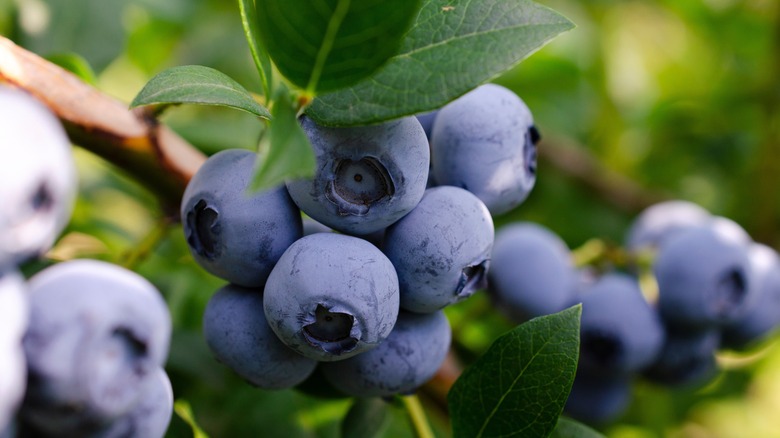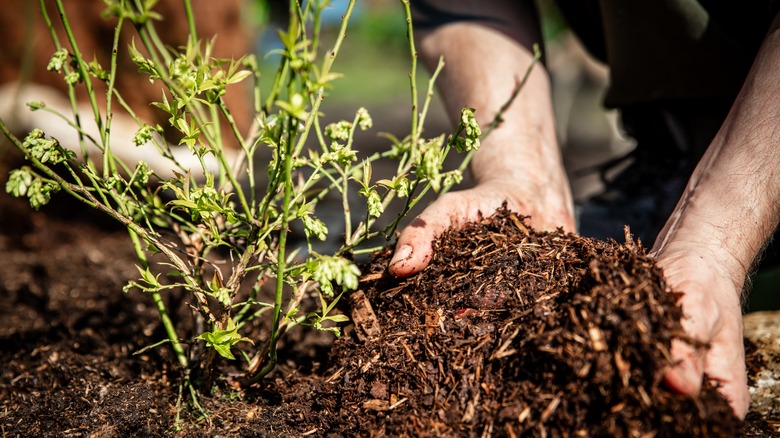Think Twice Before Putting This Staple Ingredient In Your Blueberry Garden
Blueberries can be sweet to eat, but their soil needs tell a different story that you want to be mindful of when growing them in your garden. This fruit falls into the family Ericaceae, which includes azaleas and rhododendrons, and it can often be found growing among these family plants, in the wild. In fact, much of the way the domestic blueberry bush grows is akin to its wild lineage and is one reason why you may want to think twice before supplementing the plant with epsom salt.
Epsom salt is often recommended as a source of magnesium in the garden, and magnesium is a key nutrient involved in a number of processes that affect the health of your blueberries. Without it, you may notice leaf discoloration. However, blueberries are one of many plants that don't need epsom salt because more magnesium availability can cause calcium deficiency since magnesium and calcium compete with one another. As a result, blueberries may develop blossom end rot or decay from the inside. Additionally, overuse of epsom salt may reduce a soil fungus called mycorrhizae that is known to aid blueberry plants in nutrient uptake and water absorption.
Here's what to use for blueberries instead of epsom salt
If epsom salt may actually harm your prized blueberry bushes, what do you use instead? You'll be happy to know that there are a number of soil nutrients you can use to grow and care for blueberry plants. There are three components to be considered when supplementing your blueberry's soil: Organic matter, fertilizing depleted nutrients, and soil pH levels.
When addressing organic matter, you can mix sphagnum peat moss into the soil when planting your bush. You can also use decayed pine sawdust or bark. To replenish macronutrients like nitrogen, potassium, and phosphorus, some natural fertilizer sources include blood meal, corn gluten, bone meal, rock phosphate, kelp meal, sul-po-mag, and potassium sulfate.
For correcting soil pH, keep in mind that blueberries thrive in your garden's acidic soil, desiring a pH of 4.5 to 5.4. When soil pH levels are higher than 5.1 and too alkaline, mixing sulfur or aluminum sulfate into the surface of the soil can bring the pH down. Meanwhile, if soil pH is too acidic and is below 4.0, apply dolomitic lime. Dolomitic limestone is a helpful alternative to epsom salt, especially, because it's a source of both magnesium and calcium so you don't have to worry about creating a nutrient imbalance between the two compared to applying epsom salt on its own.


